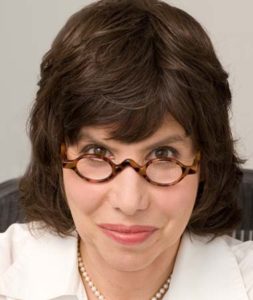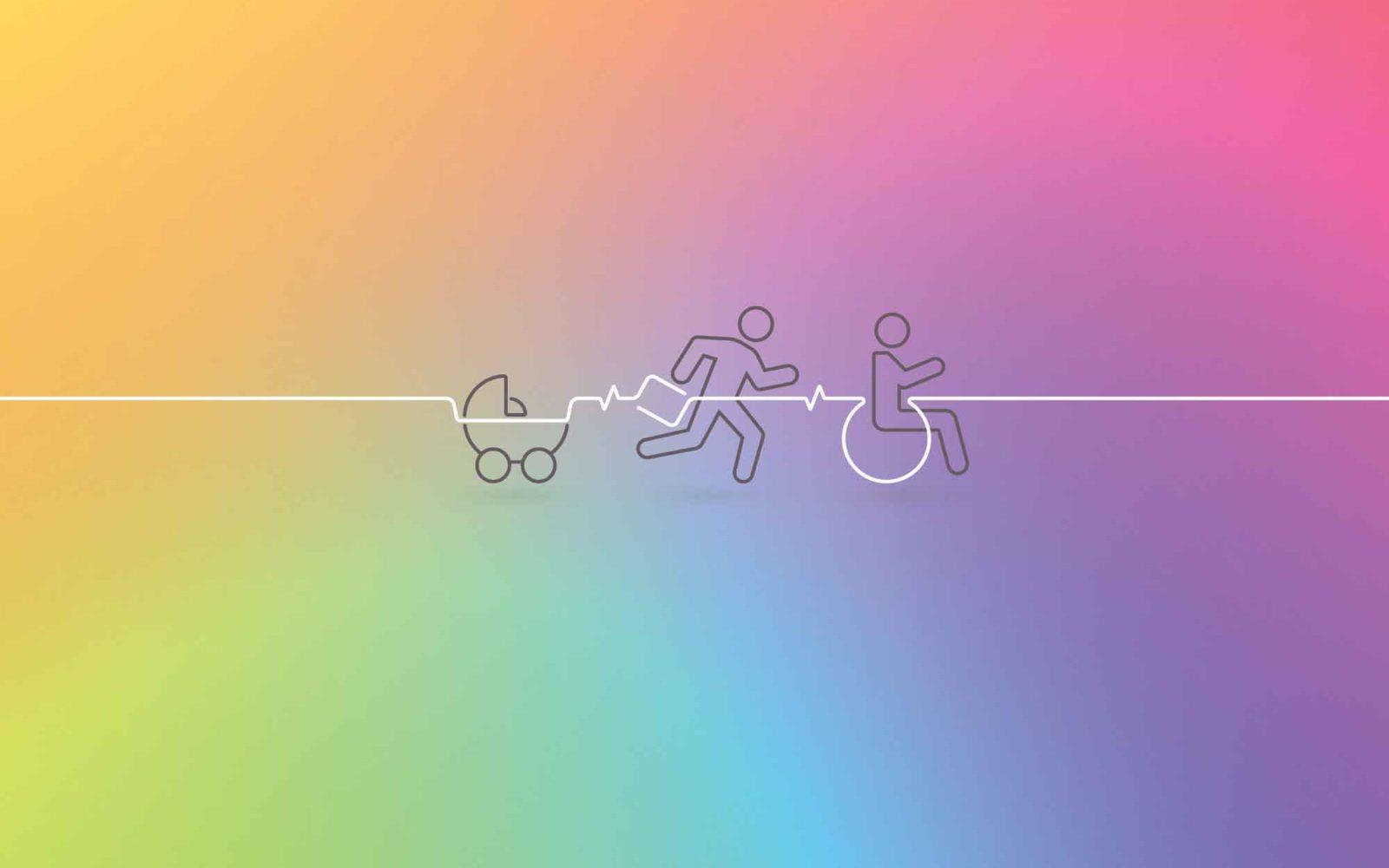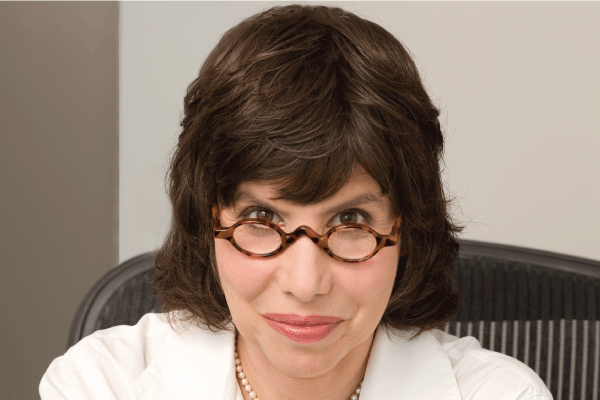Presidential Column
The New Riddle of the Sphinx: Life History and Psychological Science


What has one voice but goes on four legs in the morning, two in the afternoon, and three in the evening? The wise Sphinx posed this riddle, and clever Oedipus guessed the answer. It’s a human being, who crawls as a baby, stands on two legs as an adult, and walks with a stick in old age. But this ancient exchange can also illuminate an inverse riddle—one that consumes contemporary psychological scientists: What does it mean to be a human being? I’d argue that to be human is, at least in part, precisely to be a creature that is transformed from the morning to the evening of life.
Psychologists have often focused on just one of the Sphinx’s ages—the 20- to 50-year-old adult—not coincidentally, the age when most of us become psychologists. The picture is that the 35-year-old mind, say, is the exemplar of human nature and the summa of human intelligence, and other minds either build up to or fall off from that peak. (Historically, of course, it was more like the 35-year-old White Western man’s mind.) Even developmental psychologists have often conceived of growing up, or growing old, as moving toward or away from a more perfect adult state.
But the right answer may be more like the Sphinx’s riddle: A human being is a single creature with radically different, but equally important, phases. All animals are deeply shaped by what evolutionary biologists call their “life history”—the way they change and alter over time, how long they are helpless babies, when and how they reproduce and care for their young, and when and how they become old. In fact, the full Ancient Greek version of the riddle is even more explicitly about the puzzles of life history. That is, the Sphinx in her wisdom notes that humans transform more than other animals, pointing to the strange fact that the first four-footed humans are so much slower and weaker than the later ones. (This is the version given by Athenaeus and a marginal note to a commentary in Euripides, rather than the more widely known version from Pseudo-Apollodorus. For me, at least, there is no more seductive procrastination device than an Ancient Greek internet rabbit hole.) From a biological point of view, the many ages of man are a crucial part of what makes us human; in fact, the ages of woman, delineated by menarche and menopause, are even clearer and more crucial. And each of our ages comes with its own psychological strengths and weaknesses, its own relationships, its own cognitions, motivations, and emotions.
Why begin my inaugural column as APS President with the Sphinx and life history? Okay, some of it may be the professors’ tautology: What I study must be the most interesting thing you could possibly study, because otherwise I’d study something else. (It’s the bane of hiring committees.) But I hope there’s more to it than that. In fact, I believe the life-history perspective is particularly suited to the mission of APS.
Scientific progress depends on the division of labor—on particular scientists doing particular kinds of research on particular problems. That research is served by the many marvelous specialized professional organizations in psychology. But APS is uniquely devoted to supporting scientific psychology in general. The recently articulated pillars of our association commit us to supporting basic psychological science around the globe, communicating that science to others, and applying it to the great practical and political problems of our age.
In these columns, I want to suggest that the Sphinx’s insight—that our life history is an essential part of our humanity and profoundly shapes our minds—is especially well-suited to these APS ideals. It’s an idea that cuts across all the subdisciplines of psychology and that can help us both communicate our science more effectively and speak to the public policy issues of the day. So in my year as presidential columnist, I want to go beyond the 20- to 50-year-olds to focus on the more neglected ages: infancy, early childhood, school age, adolescence, elderhood, even that very last stage as we near death. Thinking this way can itself give us a new perspective on what those 35-year-old minds are doing.
“What do we all share? But we also ask about what is special and particular about specific minds. How and why are we all different? The many stages of life history are universal—we all go through them, at least if we’re lucky.”
All psychological scientists are driven by two kinds of questions. One asks what is universal about human minds. What do we all share? But we also ask about what is special and particular about specific minds. How and why are we all different? The many stages of life history are universal—we all go through them, at least if we’re lucky. I’m fortunate, at 67, to have made it to the postmenopausal healthy elderhood phase, focused on both actual grandchildren and academic ones, though I can already see the last phase looming. And yet we find our very own older or younger selves different, mysterious, and even alien, although, as the Sphinx pointed out, they all speak with our voice. Our young selves wonderingly ask our older selves, “How will there ever be a time when Lego/Minecraft/sex/tenure won’t seem important to me?” Our older selves reply with equal astonishment, “How could there ever have been a time when Lego/Minecraft/sex/tenure seemed so important to me?”
The life-history perspective also cuts across the different subfields of psychology. Cognitive science shows that intelligence, natural or artificial, intrinsically and inescapably requires trade-offs—exploration versus exploitation, breadth versus focus, variability versus predictability. Life history is one way to resolve those trade-offs. Even machine learning systems explore early and exploit later, and artificial intelligences seem to do better when they have the equivalent of a childhood. We see these trade-offs empirically, too. Both children and elders, surprisingly, can turn out to be smarter than 35-year-olds, at least in some ways. For instance, cognitive psychology has often focused on 35-year-olds’ capacities for executive function. But less prefrontal executive control in children and elders may actually make them better at some types of learning—and even more creative.
Humans are also a deeply social species, and many of our deepest and most important social relationships connect people in different life-history stages. Just as much of cognitive psychology has focused on 35-year-old executives, much of social psychology, as well as political science and economics, has focused on the relationships between them. The central idea is the “social contract,” in which skilled autonomous agents trade off their utilities and coordinate their interests—as if all those prefrontal executives were convening at Davos. The relationships that cross life-history boundaries don’t fit the social contract picture well, and yet they are central to our lives. They include all the many undervalued and overlooked forms of caregiving: a father soothing a fussy baby; a daughter looking after her fragile, dying father.
Other kinds of care and teaching, especially between elders and children, allow the distinctively human gift of cultural transmission. My 19-century Jewish ancestors may not have been able to own land in Russia, but a grandmother like me passes on the Gopnik heirloom jokes, the true inheritance of the shtetel, to a new generation. There are also distinctive social relations in the other direction—the young may transform the old as much as the old shape the young, and life history allows each generation to take off from the previous one. Adolescent rebellion and social, moral, and technological progress go hand in hand. The difficult, disruptive innovations of each new generation become the accepted, unattended background that the next generation of children takes for granted.
Just as the ages come with distinctive cognitive and social signatures, they also come with even more distinctive emotions and motivations. In adulthood, we celebrate action—that heroic dopamine-fueled drive to formulate new goals and work to achieve them, to plan and build, to ignore distractions and delay gratifications. Of course, at the same time we bemoan the way those goals condemn us to the hedonic hamster wheel, always restlessly pursuing the next unattainable utility. But look at 4-year-olds and you see a very different picture—tempestuous emotion and insatiable curiosity, passionate tears over a broken toy or the wrong type of cereal, and equally passionate joy over a caterpillar on a leaf or the moon in the trees. And for 10-year-olds the picture is still different—a game of foursquare or Minecraft with your friends becomes the acme of human happiness. There is good evidence, too, that emotions and motivations change again in elderhood. As our future shrinks and our waistline expands, we become more altruistic, generous, and emotionally serene, less concerned with our own goals, and more anxious to further the potential of the next generation. And then, in true old age, we face the final challenge of accepting our mortality.
“Some of the most beautiful and important psychological research is also unintuitive or even abstruse—untangling the mysteries of binocular vision or fine motor control makes for great science but not gripping stories. But the progress of a human life—the way we move from morning to evening, innocence to experience, birth to death—is precisely the most fundamental human plotline, as those Ancient Greek storytellers realized.”
In the same way that life-history questions pull together different subfields of psychology, they also speak to a wide range of everyday human experiences. That helps psychologists communicate to nonpsychologists—another APS pillar. Some of the most beautiful and important psychological research is also unintuitive or even abstruse—untangling the mysteries of binocular vision or fine motor control makes for great science but not gripping stories. But the progress of a human life—the way we move from morning to evening, innocence to experience, birth to death—is precisely the most fundamental human plotline, as those Ancient Greek storytellers realized. All of us, scientists or not, can identify with its twists and turns.
Finally, many of the most important practical and political questions of this very moment are especially illuminated by the life-history perspective. What can we do to solve the childcare crisis and take better care of very young children, and what consequences will that have for later life? How can we stop the transmission of disadvantage and inequality across generations? Where do sexism and racism come from, and how can we fix them? Who decides what children should learn in school and how they should learn it? How do changes in technology, like the growth of the internet, social media, or AI, influence the way we grow up? What can we do about the epidemic of adolescent anxiety disorders? Does aging doom us to cognitive decline? How should we deal with an aging population and the crisis of eldercare? What do we owe future generations? The psychological science of life history can speak to all of these burning questions, and careful, rigorous empirical psychological science will be essential to answer them.
Obviously, I won’t be able to tackle all of this in my year as President, or in these columns. But I do hope that taking the life-history perspective can illuminate both the scientific and practical questions we care about at APS. The Sphinx’s ancient riddle from our past can guide us to a better future.
Related content we think you’ll enjoy
-

Cultural Diversity
How do people respond to increasing cultural diversity in their communities, cities, and countries? Researchers investigate. Visit Page
-

Mobility and Opportunity Across the Lifespan
Researchers explore the science of what changes, and what stays the same, as we age. Topics include the lifelong impact of childhood experiences, mitochondria’s powerful role in healthy aging, and the need for a new “map of life” as life expectancies increase. Visit Page
-

APS Fellow Alison Gopnik Named Guggenheim Fellow
Alison Gopnik, an APS Fellow who is recognized internationally for her study of children’s learning and development, has been selected as a 2020 Guggenheim Fellow. Visit Page
Feedback on this article? Email apsobserver@psychologicalscience.org or login to comment.





Comments
Crafton Hills College
Member
Member Since 04/12/2004
I was truly inspired by this column. It is my hope that APS journals (and conventions) will also look favorably on research and theory emphasizing the life history approach.
APS regularly opens certain online articles for discussion on our website. Effective February 2021, you must be a logged-in APS member to post comments. By posting a comment, you agree to our Community Guidelines and the display of your profile information, including your name and affiliation. Any opinions, findings, conclusions, or recommendations present in article comments are those of the writers and do not necessarily reflect the views of APS or the article’s author. For more information, please see our Community Guidelines.
Please login with your APS account to comment.